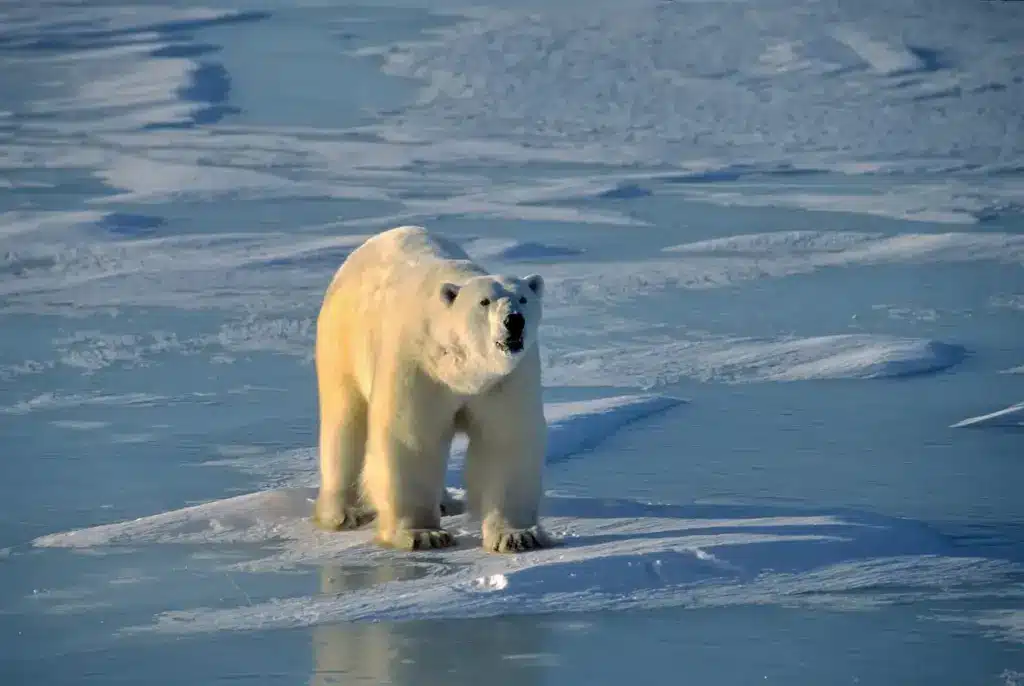About 25,000 polar bears roam the earth’s Arctic and sub-Arctic regions, where they reign as the top predator. Their preferred prey animal is the seal, which they stalk on ice flows, creeping up on them as they sunbathe. In fact, polar bears are among the species most jeopardized by global climate change because of the fact that decreasing ice in the Arctic makes if much more difficult for them to hunt seals.
[ez-toc]

The International Union for the Conservation of Nature Red List of Threatened Species designates polar bears as a “Vulnerable” species, with populations that are declining.
In addition to seals, polar bears will also take on creatures as large as a full-grown walrus or a musk ox; in fact they are the most carnivorous of all bears, as their diet consists almost exclusively of meat. When live animals are scarce, polar bears are not above scavenging a ripe whale carcass, which they will often locate by smelling it from many miles away.
Further facts about the polar bear:
Their scientific name is Ursus maritimus. They evolved from brown bears relatively recently in evolutionary history—perhaps no more than 200,000 years ago—and are the largest non-aquatic predator in the world, with males reaching weights of well over 1,000 pounds (454 kilos).
Polar bear hair is not really white but colorless; the colorless hair efficiently channels the sun’s heat to the bear’s skin—which is black, because dark colors absorb heat rather than reflect it.
Polar bears hibernate during the long Arctic winters in snow caves that they dig into the sides of hills. It is during this hibernation time that female polar bears give birth to one or two cubs. By the time the Arctic spring arrives, the cubs are ready to follow their mother as she goes hunting.
Mother polar bears keep their cubs as far as possible from male polar bears, who will kill and eat them if they get a chance.



